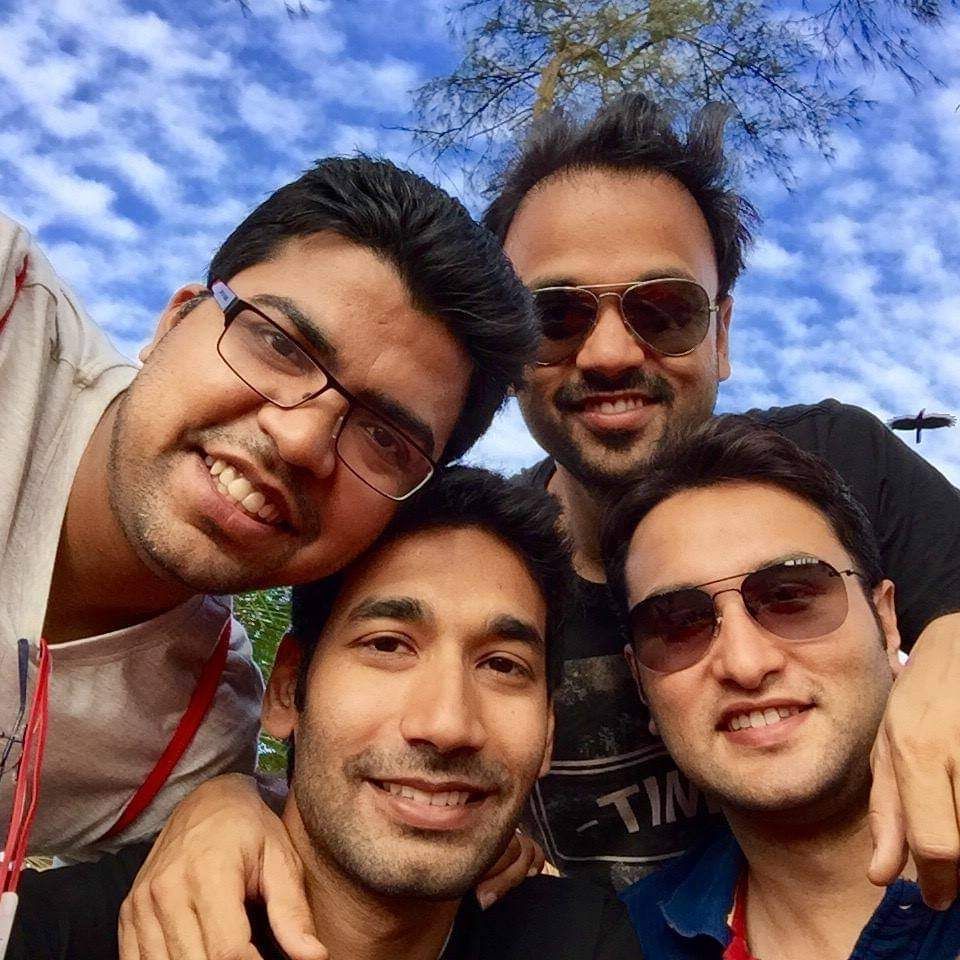For Pulkit Jain, Co-founder and Product Head of Vedantu, technology and building products wasn’t commonplace. An alum of IIT Roorkee in chemical engineering, his route towards technology and products was very different from a traditional techpreneur.
Growing up in Rawatbhata Rajasthan, one of the eight atomic power stations in India, Pulkit says his introduction to Physics, Mathematics, and education in general was ‘fun and simple’.
“We studied for the love of it. Not for any exam pressure or scoring high marks,” he recalls.
It was this love and joy of learning that the four founders of Vedantu wanted to replicate through their startup. It was only in class 12 that Pulkit and his friends understood that there was a world beyond their township — a world of IITs, and of course, Kota.
Look beyond the cookie cutter model
“Logic, Physics, and Mathematics came naturally to me,” says Pulkit. And yet, today he makes several technological decisions.
He says, “I am not a coder. I have driven tech and product teams from first principles and understanding of the possibilities. What can be done, what can be created, and what problems can be solved with technology.”
At IIT Roorkee, Pulkit realised he didn’t want to follow the usual path of becoming an engineer or a doctor or following the — ‘job or MBA after IIT’ route.
While he was already placed at Evalueserve as a business analyst, he felt it was important to understand the world in a different light.
Recollecting an AIDS awareness workshop he conducted, where he met people from different NGOs and healthcare camps, Pulkit says,
“It was a learning experience of meeting people with different mindsets and motivations. We were focused on jobs and fat salaries, and here were a bunch of people who left their cushy jobs to run programmes and NGOs.”
This, he says, made him realise the power of learning and empathy. But, the technology angle came in much later in life.
It was during this time, when he was studying at IIT Roorkee that he met the people who would end up founding Vedantu with him — Vamsi Krishna, Saurabh Saxena, and Anand Prakash.

Founders of Vedantu
Understanding the ground realities of life
In 2005, after graduation, the four parted ways for their respective jobs. Saurabh and Anand were placed in a chemical factory in a small town in Patiala, Punjab. Tech wasn’t a buzz word among the IIT students then; the dotcom bust was too fresh in everyone’s memory. Consulting, and financial analytics were big roles of the time.
While the job was good, the four of them began asking themselves what the purpose of it all was. “Interestingly, Saurabh and Anand gave us that purpose. They would talk to factory workers every day about their children’s education and the school system,” says Pulkit.
The turning point came on December 12, 2005, when the four met for a holiday and visited a Kendriya Vidyalaya, where the children of the factory workers would study.
“As young 22-year-olds, the only thing we could tell the children was that hard work and exposure are the most important things. It doesn’t matter where you come from. It was an overwhelming experience,” says Pulkit.
According to him, the concepts of science and mathematics just don’t change. The only difference are the teachers. People who are IIT graduates don’t become teachers, and even if they do, don’t even go to a town like Patiala to teach.
“We realised learning and teaching is much beyond the concepts. Teachers help you learn and unlearn and relearn. We realised that there is a need for ‘Teachers by Choice’,” explains Pulkit.
Landing on the right solution
The very next day, Anand decided he wanted to quit his job and teach children, and the others also realised that they wanted to do the same.
“We weren’t thinking about scale, entrepreneurship, valuation or anything. We just were thinking it would be fun to teach children,” says Pulkit. They decided not to tell their parents as they weren’t sure how to explain why they were quitting their comfortable and well-paying jobs to teach in a small village in Punjab.
Nevertheless, the four started Lakshya Institute in 2006 in Patiala. Pulkit says they were looking for a place devoid of any pre-existing big educational setup.
They went to nearby schools and spoke to the students. The idea was to get these children the right core understanding of subjects and help them get into top-tier colleges. When more than 11 of the 30 students were placed in IITs, it validated their ‘experiment’ and efforts.
“This place had no trend of students getting into an IIT. And this increased to AIMS and others. And we realised that there was something at play,” says Pulkit.
They focussed on getting the right teachers and soon, were able to bring in their alumni network as teachers.
“If you have to become a teacher, you have to do it out of a pure passion, and it needs to be a conscious choice,” says Pulkit.
By 2009, they had over 100 students in top-tier colleges.
The secret ingredient — tech
Eventually, the team began focusing on scaling but were met with a challenge. They realised a physical place cannot scale to every single small town and hamlet of the country.
It was only then that tech became the focus. Here, Pulkit found himself disassociating from Lakshya to understand more about technology.
He moved to Bengaluru and focused on understanding tech from first principles. He roped in his juniors, who had built a tech platform in IIT Roorkee that was getting popular in the IIT circles. They helped build the tech.
“I learnt everything from them. It was a crash course around the broad building blocks of technology and the possibilities,” says Pulkit. They first built a B2B platform where the tech was used by institutions to launch their apps.
Building tech by understanding the offline
However, the platform wasn't solving the core problem. In mid-2014, they began working on a technology that focussed on the problem of getting the right teachers to the right students.
He says the offline experience of building the institute helped him understand the elements of tech that could be built to create a personalised learning experience.
Impact for Vedantu meant understanding how to predictively improve each and every child and their learning outcome at a massive scale. This is where the system comes into play.
Intent is everything
The idea Pulkit explains is about finding the balance between the human interaction in the offline world and the predictability and scale of the online world.
“A class on YouTube can be delivered with some finesse and in a nice way, but that doesn't measure what the child learn’s or not in class. Learning engagement is hardly measured. Our understanding of the offline and the online world helped us build the tech and have control over the content and how one is engaged,” explains Pulkit.
The reason it became easier for Pulkit to code only after starting Vedantu with his small team, was because he could understand and bring the offline and online world of learning. He believes it was the intent that can build products, code, and program a solution.
“I have always placed higher grades of intent than mathematical or tech genius. The right intent can solve the biggest of problems. It is important to focus on the deeper purpose and reason. Only then can tech be built. If you feel for the problem and only then does it make sense to use the genius. It is the intent that makes the product. The world today has several problems to solve and address if you go deep,” says Pulkit.
Edited by Saheli Sen Gupta
Link : https://yourstory.com/2020/12/ys-learn-vedantu-story-non-techie-built-edtech-startup
Author :- Sindhu Kashyaap ( )
December 07, 2020 at 06:30AM
YourStory




